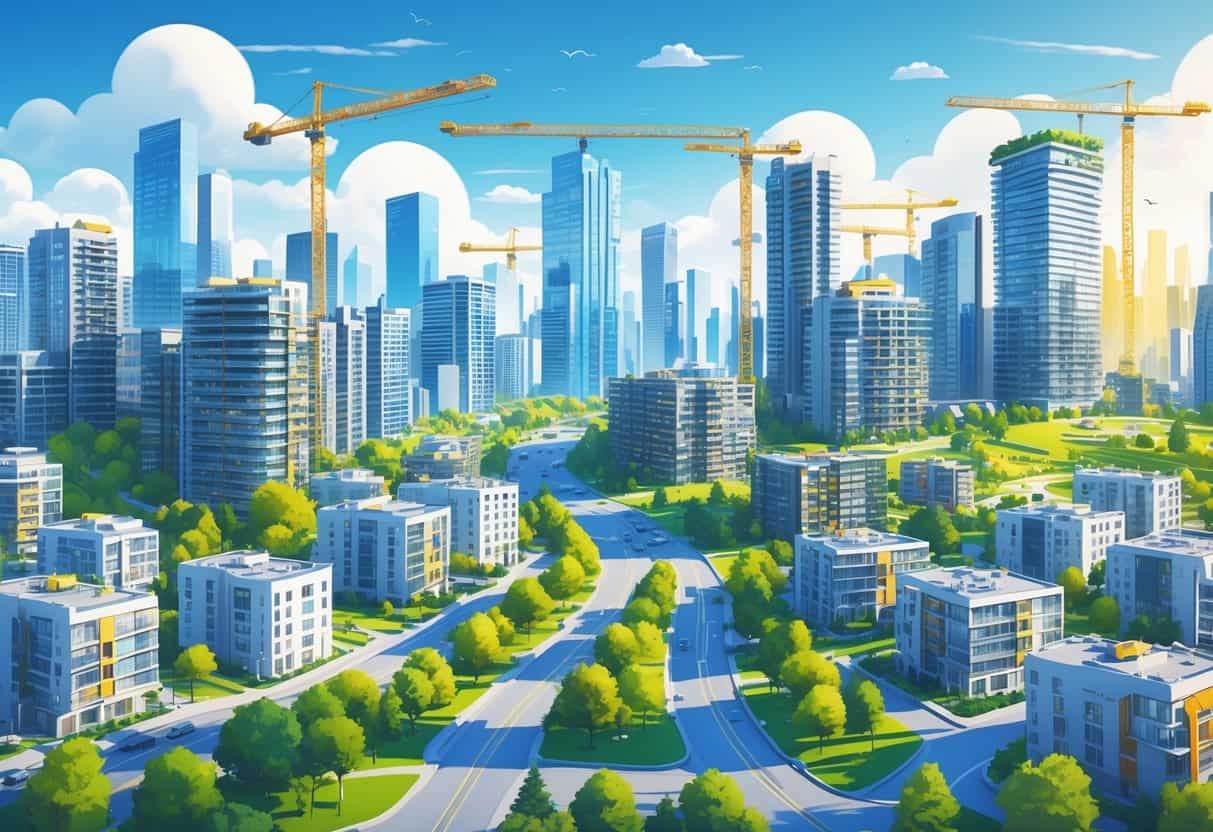A bunch of U.S. cities are seeing their housing markets take off lately. More homes are popping up, prices are climbing, and honestly, demand just keeps going.
Some of the fastest-growing markets? Think Buffalo, NY, and Myrtle Beach, SC. Strong job numbers and more people moving in are really fueling the fire.

If you live in or visit these places, you’ll spot cranes and fresh construction everywhere. Home values are rising, sometimes faster than feels comfortable.
So, if you’re eyeing real estate—buying or investing—it’s worth knowing which cities are on the move. These shifts say a lot about where you might find your next opportunity.
Catching these trends early might give you a leg up. Why do some cities outpace others? It’s a question worth asking if you’re planning your next housing move.
Key Takeways
- Some cities are pulling way ahead in housing demand and price growth.
- Population and job numbers are big reasons for this rapid expansion.
- Watching these fast-growers can help shape your plans.
Top Cities With the Fastest Growing Housing Markets
Certain cities are leading the pack in population jumps and homebuilding. Some regions just see bigger price gains, often thanks to local job markets or who’s moving in.
Let’s break down some of the top cities, regional trends, and what’s happening with home prices.
City Profiles and Growth Statistics
Myrtle Beach, SC? It’s got a population growth rate close to 3%. That’s a lot of new folks needing homes.
Buffalo, NY is also up there, staying hot for buyers because it’s still pretty affordable and keeps growing.
Then you’ve got places like Colorado Springs, CO, and Miami, FL. Both are seeing new residential projects spring up to meet all those new arrivals.
People are drawn in by decent jobs and a good lifestyle. That combo keeps housing starts moving upward.
It’s interesting—each city’s growth really comes down to economic activity, who’s moving in, and what kind of incentives are out there for builders.
Regional Trends in Housing Market Expansions
Growth isn’t the same everywhere. The Southeast, especially Myrtle Beach and Miami, is seeing a boom in new homes.
Warm weather and retirees heading south play a big part.
The West Coast—San Jose, San Francisco, Oakland—has sky-high prices but not much new population. It’s competitive and expensive, for sure.
In the Midwest, spots like Milwaukee and Buffalo pull in buyers with lower prices and more jobs.
You can really see how climate, jobs, and cost of living shape these trends.
Comparing Year-Over-Year Home Price Increases
Prices shot up in some cities, while others barely budged. Here’s a quick look:
| City | Year-Over-Year Price Increase (%) |
|---|---|
| San Jose, CA | 84.7 |
| San Francisco, CA | 83.4 |
| Oakland, CA | 69.0 |
| Milwaukee, WI | 68.6 |
| Buffalo, NY | Moderate growth |
California cities? Wild price jumps—demand’s through the roof, but there’s just not enough homes.
Buffalo and Milwaukee are more affordable, so first-time buyers and investors are paying attention.
These trends are worth keeping in mind if you’re timing a move or weighing investment risks.
Key Factors Driving Rapid Housing Market Growth
Ever wonder why some markets just take off while others lag? It’s a mix of jobs, new folks coming in, and what’s being built.
Economic and Employment Influences
Cities with strong job markets draw people in—no surprise there. When companies grow or new industries show up, housing demand can spike.
Diverse economies usually mean steadier housing markets. Tech, healthcare, manufacturing—if those are growing, so is housing demand.
If jobs go up but there aren’t enough homes, prices almost always follow. It’s a good thing to remember if you’re thinking about where to buy.
Population Influx and Demographics
More people moving in equals more homes needed. Migration could be from other states or even countries.
Younger buyers—Millennials and Gen Z—are starting families, so they’re looking for homes, too.
Exurbs and suburbs are often growing faster than downtowns. Folks want more space, especially families.
Retirees moving for warmer weather can shift demand, too. Knowing who’s coming in can help you guess what kinds of homes will be hot.
Impact of Infrastructure and Development Projects
When cities put in new roads, transit, or schools, neighborhoods can suddenly become way more popular.
If local laws make it easy to build, you’ll see faster growth. But when it’s tough to add new housing, prices just keep climbing.
Shopping centers, parks, and community spaces add value, too. Most buyers want good amenities within reach.
Implications for Homebuyers and Investors
Fast-growing markets can be exciting, but they’re not without headaches. There are chances to score big, but also plenty of competition and price jumps.
Opportunities in High-Growth Markets
If you buy in a fast-growing city, there’s a decent shot your property will gain value. New jobs, better roads, or just a great lifestyle can all drive demand.
Sometimes, prices are still lower than in the biggest metros—so your money goes further. Investors might see good rental returns as more people arrive.
If you’re aiming for steady gains, look for places with strong economies or growing populations. That’s usually where things keep trending up.
Challenges of Entering Competitive Housing Markets
High-growth markets usually have limited housing inventory. Fewer homes for sale means prices shoot up fast.
Bidding wars? Yeah, they’re basically the norm. Investors often swoop in and buy up several properties at once.
That leaves even less for regular folks just trying to find a place. It can feel a bit discouraging, honestly.
Rapid price jumps also mean bigger mortgage payments. Sometimes, just getting approved for a loan gets trickier than you’d expect.
